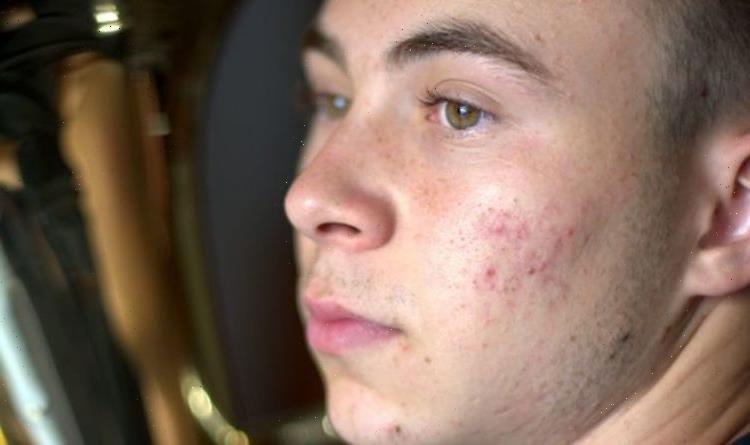Beauty blogger makes acne DISAPPEAR with just one key product
We use your sign-up to provide content in ways you’ve consented to and to improve our understanding of you. This may include adverts from us and 3rd parties based on our understanding. You can unsubscribe at any time. More info
If acne could speak, you’d know everything you need to know about the causes of your spots. Face mapping is the closest we’ve got to understand why we get spots in certain areas of the face only. Express.co.uk chatted to a surgeon, world-leading Aesthetic Doctor and Global Lecturer in beauty and wellbeing Dr Jonquille Chantrey (@drjonquillechantrey on Instagram) to find out what the location of YOUR spots mean.
Some skincare experts believe that spots have different causes depending on which area of face they occur.
This idea is rooted in the 3,000-year-old theory of face mapping, but it isn’t always accurate.
For example, spots on your nose aren’t always caused by problems with the lungs and heart and spots on your cheeks aren’t always to do with your metabolism.
Express.co.uk chatted to Dr Chantrey to find out what your spots typically mean.
She said: “Often the cause in any one patient is multifactorial and a mix of lots of factors.
“No matter the cause, a tailored strategy for each individual patient is key for both in-clinic and home regimes.”


What the location of YOUR spots mean
Most spots are caused by the same process linked to your oil glands.
Dr Chantrey said: “The skin’s sebaceous glands (oil glands) produce sebum which can obstruct the openings of hair follicles.
“As skin cells die and are ready to be sloughed off, some can mix with this sebum, trapping oil and bacteria into blocked pores.
“When this turnover and exfoliation is dysfunctional it leads to blackheads, whiteheads and acne pustules.”

There are various contributing factors to this dysfunctional cell turnover.
Dr Chantrey explained: “Genetics is an important factor in how your skin looks and can lead to widespread acne.
“Your genetics can cause acne affecting multiple areas of the face, neck and back.”
Your hormones, particularly if you’re a woman, are also to blame for acne and changes in this skin.
Dr Chantrey said: “Hormone changes can stimulate acne including (but not limited to) adolescent acne, menstrual cycle, perimenopause and hormonal conditions e.g. polycystic ovaries.”
Face mapping correctly suggests that spots on your chin and lower face are to do with your hormones, but hormonal spots can also happen on the temples and throughout the face and neck, according to Dr Chantrey.
The way you live your life plays a significant part in how your skin looks and how spotty you get.
Dr Chantrey explained: “Dairy, sugar, poor gut function and stress can have a significant impact.
“I always ask my patients about these factors.”

Don’t forget that what you put on your skin can actually make your skin worse too.
Dr Chantrey said: “The wrong skincare products and makeup can wreak havoc on the skin leading to blackheads, whiteheads and congestion.”
In today’s world, we also need to consider the impact that face coverings have on our skin.
Dr Chantrey said: “Maskne is obviously being triggered by the use of facemasks.
“Many people who have never suffered before are now complaining of inflammation around the nose and chin.”
Source: Read Full Article
